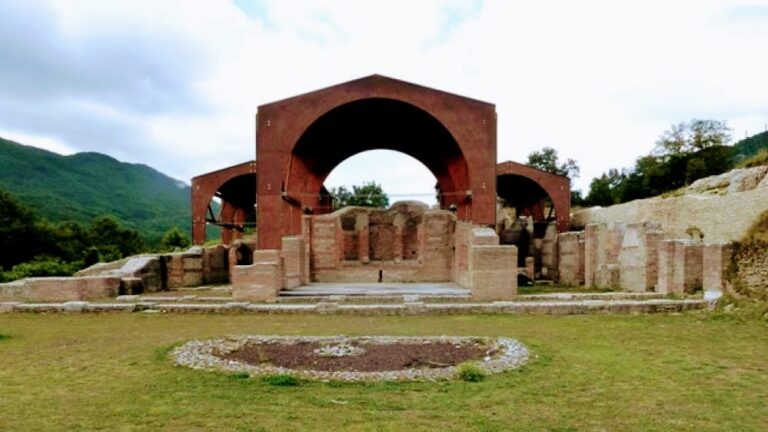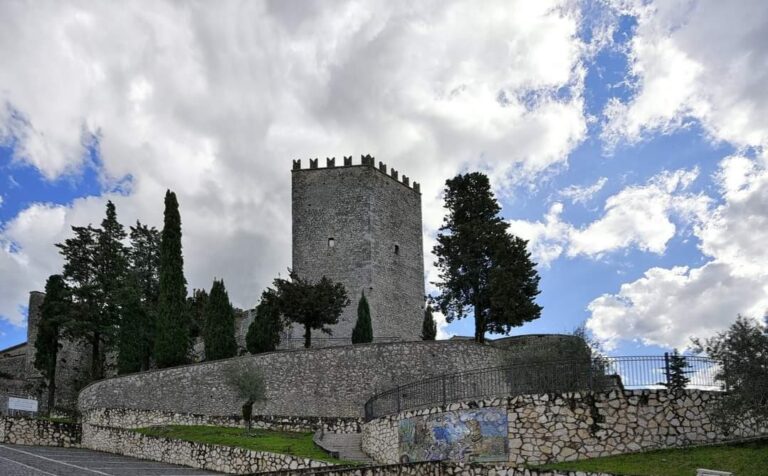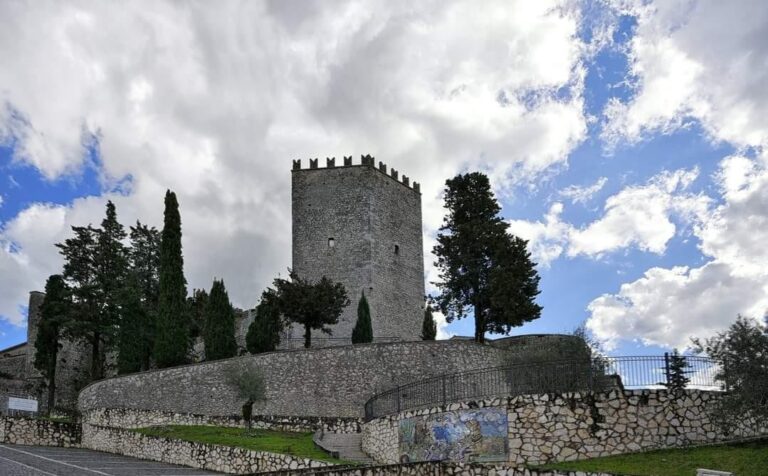Castle of Fumone: A Medieval Fortress and Noble Residence in Italy
Visitor Information
Google Rating: 4.4
Popularity: Medium
Google Maps: View on Google Maps
Official Website: www.castellodifumone.it
Country: Italy
Civilization: Unclassified
Remains: Military
History
The Castle of Fumone is located in the municipality of Fumone, Italy. It was constructed by medieval builders as a military stronghold within the Papal States, playing a crucial role in the region from the 11th through the 16th centuries.
During its early history, the castle functioned primarily as a military fortress and lookout point. For more than five centuries, its commanding high tower sent smoke signals across the Campagna and Marittima areas, alerting the surrounding countryside to enemy movements along the Via Casilina. This communication role inspired the local proverb, “When Fumone smokes, the whole countryside trembles,” illustrating the fortress’s importance as an early warning system. Its strategic position made the castle a formidable obstacle; it withstood attempts at conquest by Holy Roman Emperors Frederick Barbarossa and Henry VI of Swabia. The fortress was only yielded peacefully in the 13th century when Pope Gregory IX secured its surrender through the payment of a substantial sum.
In 1121, the castle became the site of imprisonment and death for the French antipope Maurice Bourdin, also known as Antipope Gregory VIII. He died within its walls, and although his body was buried there, the tomb was never found, adding an air of mystery to the castle’s history.
Perhaps the most notable chapter occurred in 1295 when Pope Celestine V (born Pietro da Morrone) was confined in the castle’s prison cell. He spent ten months there under virtual isolation before his death on May 19, 1296. This event imbued the site with enduring spiritual significance and led to the establishment of a cult around Celestine V.
By the 16th century, the castle’s military function diminished due to changing political and military circumstances, and it gradually fell into neglect. Recognizing its religious and historical importance, particularly its connection to Celestine V, Pope Sixtus V entrusted the fortress in 1584 to the Roman noble Longhi family. This family, descended from Cardinal Guglielmo Longhi—an early supporter of Celestine’s cult and protector of the Celestine monastic order—transformed the castle from a military bastion into a noble residence.
From this point onward, the castle remained in private hands, inhabited by successive generations of the Longhi lineage. In the 20th century, Pope Paul VI visited the site in 1966 and consecrated it by placing a votive cross in honor of Celestine V, further deepening its spiritual resonance. Since 1990, stewardship under the owners Stefano and Fabio de Paolis has brought greater accessibility to the castle’s historical features.
Remains
The Castle of Fumone encompasses an area of approximately 3,500 square meters, situated over 800 meters above sea level. This elevated position accentuated its role as a lookout stronghold. Architecturally, it features four internal towers connected by ramparts and moats, elements that the Longhi family later unified to create a remarkable hanging garden during the 17th century. This garden stands as one of the largest of its kind in Europe at such an altitude and is a rare example of classical Italian garden art, blending defensive structures with cultivated outdoor space.
Within the castle, significant spaces relate to its historical occupants. On the noble floor, visitors find an 18th-century chapel dedicated to the memory of Pope Celestine V. Adjacent to the chapel is the prison cell where Celestine V was confined for his final months, effectively sealed within the fortress. These rooms preserve a poignant connection to the castle’s spiritual history.
The site also houses a museum featuring archaeological artifacts that provide insights into its various periods of use. Among its exhibits, the family archive contains a secretaire that holds the embalmed body of Francesco Longhi, a five-year-old child murdered in a 17th-century family dispute over inheritance. This tragic artifact adds a somber human dimension to the castle’s story.
The castle’s exterior and entrance evoke its fortified past, though no detailed architectural measurements or decorative descriptions have been explicitly recorded. Overall, the castle today stands as a layered historical monument blending military architecture, noble residence features, sacred memorials, and cultivated gardens, reflecting centuries of evolving use and significance.










